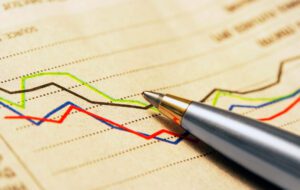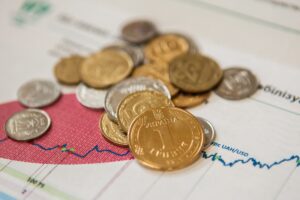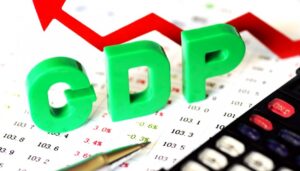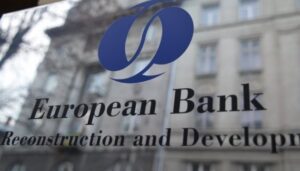
The share of insurance in Ukraine’s GDP is very low and has a downward trend: since 2014 and as of June 30, 2021, it has decreased from 1.69% to 1.14% (by 32.5%), Director General of the Insurance Business Association Viacheslav Cherniakhovsky said at the XXI International Financial Forum in Odesa.
“We have not yet reached the indicators of the first half of 2017 in premiums if we count the market size adjusted for inflation. Achieving the level of penetration of 2% of GDP, laid down in the updated Financial Sector Development Strategy of Ukraine until 2025 year seems unlikely by the end of 2024, especially if there are no changes in the taxation of enterprises when they conclude long-term life insurance contracts for their employees,” he said.
Speaking about the steps that would contribute to the development of the market, Cherniakhovsky noted the inadmissibility of such practices as the accreditation of insurers by banks. “Not a single legislative document contains any accreditations. This is an anachronism and remnants of monopoly. On the contrary, there is a provision of the law on insurance, according to which the consumer has the right to choose an insurer, and it is forbidden to impose the conclusion of an insurance contract within the framework of other legal relations. Banks can only nominate requirements for the structure of the insurance product provided by the insurance company – definitions of insurance amounts, a list of risks, the size of the franchise, the terms of payment and cases of refusal in it,” he said.
Cherniakhovsky said that the National Bank of Ukraine (NBU), as a general regulator for the banking and insurance market, should stop this practice. “This is necessary for all consumers who receive loans now, next month, and not sometime in the future. The practice is unacceptable when banks oblige insurance companies to double prices for owners of collateralized property to receive not only interest on the loan, but and a commission of 50% of insurance payments,” he said.
According to the expert, what they are now trying to consolidate with the new law on the specifics of insurance of agricultural products with state support, in fact, is also a kind of “accreditation”. This approach is unacceptable, since any company that has received the appropriate license has the right to operate in the market for this type of insurance, he said.

The President’s Office estimates the growth of Ukraine’s GDP in 2021 at 3.8%, Deputy Head of the President’s Office Yulia Svyrydenko has said.
“We expect that a full-fledged economic recovery will take place during this and subsequent years. This year we forecast the growth [of GDP] at the level of 3.8%,” she told Interfax-Ukraine.
Svyrydenko said that currently there is a recovery in private consumption and external demand.
“Farmers are harvesting record harvests, which will also help the economy grow. At the same time, the growth potential today depends on the rate of vaccination, and the spread of new strains of coronavirus may be a risk,” she said.
As reported, the Ministry of Economy confirmed its growth forecast in 2021 at 4.1%, and the National Bank expects the GDP growth this year at 3.8%.

Oxford Economics has downgraded the forecast for Ukraine’s GDP growth in 2021 to 4% from 4.4% in the July forecast, and the risks of further lockdowns and expectations of tightening fiscal and monetary policy led to a deterioration in the forecast for economic growth in 2022 from 4.2% to 3.5%.
The disappointing Q2 data prompted us to cut our 2021 GDP growth forecast to 4% from 4.4% last month. And with Ukraine’s vaccination rate being one of the lowest in Europe, the COVID-19 infection rate may rise sharply again, according to the forecast of Oxford Economics for August.
According to the analysts, due to the lack of vaccines and hesitation regarding vaccination, the proportion of fully vaccinated is kept at less than 7% of the population. These factors pose significant downside risks to short-term growth forecasts.
Oxford Economics expects inflation to average 9.2% this year, with further declines to 6.7% and 5.4% in 2022 and 2023. At the same time, the hryvnia exchange rate on average in 2021 is projected at the level of UAH 28.4/$1, in 2022 – UAH 29.3/$1, in 2023 – UAH 29.4/$1.
As for further cooperation with the International Monetary Fund (IMF), the resumption of the Stand-By Arrangement this year, Oxford Economics considers it unlikely, since the government manages the proceeds from two issues of eurobonds. The upcoming peak public debt repayments will help cover $ 2.7 billion from the new IMF SDR allocation.
In 2022, Ukraine will have to pay $ 6.5 billion on public debt. This year, Ukraine may miss the chance to receive a new tranche of the IMF due to lack of political will. In this case, the resumption of cooperation with the fund next year remains probable, the forecast says.

Ukraine’s real gross domestic product (GDP) in the second quarter of 2021 grew by 5.4% compared to the second quarter of 2020, while falling by 2.2% in the first quarter of this year, the State Statistics Service published a preliminary estimate in Monday.
According to the authority, in comparison with the previous quarter (taking into account the seasonal factor), the GDP decreased 0.8%.

The National Bank of Ukraine (NBU) in the updated Inflation Report published on the website again worsened the estimate of the growth of Ukraine’s gross domestic product (GDP) in the second quarter of 2021 (hereinafter compared to the same period in 2020), to 7.5% from 8.7% in April and from 11.3% in the January report.
The negative impact of last year’s low harvest on exports, the food industry and agriculture (in particular, livestock farming due to a decrease in profitability as a result of higher prices for feed) remained. The negative conditions influenced agriculture and a later start of the harvesting (one week later), the National Bank said, explaining the deterioration of the assessment.
The NBU also revised its forecast for GDP dynamics in the second half of this year. If in April he expected economic growth in the third and fourth quarters, respectively, by 4.2% and 3.6%, now – by 3.6% and 5.8%.
“The key risks to the macroeconomic forecast are the imposition of stricter quarantine measures in Ukraine and globally, and a longer and more pronounced than expected surge in global inflation,” the National Bank said.
As reported, in general, the NBU confirmed the forecast for GDP growth for 2021 at 3.8% and for 2022-2023 at 4%.
According to the report, the central bank expects the economy to expand by 6.7% in the first and second quarters of next year, slowing to 2.8% in the third and to 1% in the fourth quarters.

The European Bank for Reconstruction and Development (EBRD) has improved its forecast for the economic growth in Ukraine in 2021 from 3% to 3.5%, according to its June forecast.
GDP is expected to grow by 3.5% in both 2021 and 2022, the EBRD said in its June regional economic prospects.
According to the report, the main risks are associated with the slow progress of reforms in the country and the relatively slow pace of vaccination, the bank’s analysts say.
Although the economy contracted 2% year-on-year in the first quarter of 2021 due to prolonged quarantine restrictions, there are indications that it is gradually returning to growth in the second quarter thanks to higher commodity prices, the EBRD said.